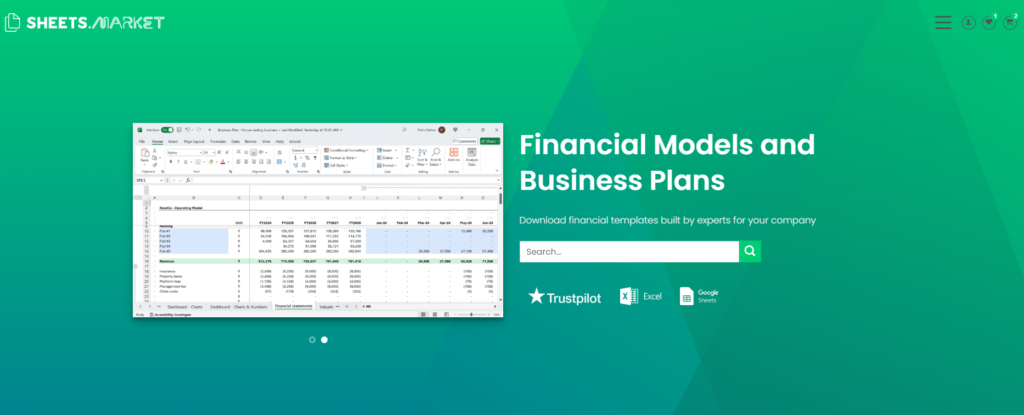Business Planning & Strategy, Financial Models
Stock Valuation Model: Excel-Based Stock Analysis Guide
Valuation is the foundation of rational investing. Mispricing stems not from market irrationality but from analytical inconsistency. Excel provides the flexibility and transparency required for rigorous stock analysis if models are structured with precision. Without it, valuation becomes a speculative exercise.
Core Model Architecture
A robust Excel valuation model is modular, auditable, and fully dynamic. Each component must be functionally distinct to isolate assumptions, automate projections, and consolidate outputs.
| Module | Purpose |
|---|---|
| Assumptions | Central control of variables: revenue, margin, CapEx, WACC, terminal value |
| Financial Statements | Forward projections of income, balance sheet, and cash flow statements |
| Valuation Engine | DCF logic and market multiple application |
| Sensitivity Matrix | Simulates valuation range from WACC and terminal growth variations |
| Dashboard | Displays equity value, EV, implied multiples, and deltas vs market price |
Each module must be interlinked. No hardcoded values outside the input sheet. No manual adjustments in calculated areas.
Valuation Methodology
Discounted Cash Flow (DCF) remains the principal method for intrinsic valuation. It calculates enterprise value by discounting projected free cash flows using WACC. Inputs include revenue CAGR (3–10%), EBITDA margin (15–40%), reinvestment rate, and terminal growth (1–3%). Terminal value should contribute no more than 60% of total valuation in a conservative model.
| DCF Input Benchmark | Typical Range |
| Revenue CAGR | 3% – 10% |
| EBITDA Margin | 15% – 40% |
| Reinvestment Rate | 30% – 60% of EBITDA |
| Terminal Growth Rate | 1% – 3% |
| WACC | 7% – 10% |
Comparable Company Analysis provides a secondary market anchor. It applies peer multiples (e.g., EV/EBITDA, EV/Sales, P/E) to the subject company’s forecasted metrics. Relevance requires tight peer matching based on sector, margin profile, and scale. Multiples should be adjusted for outliers and normalized earnings.
Model Integrity and Governance
Excel models must maintain full traceability. All assumptions must be centralized and clearly documented. Outputs must reconcile: cash must flow, balance sheets must balance, and enterprise-to-equity bridge must align. Built-in integrity checks (e.g., debt reconciliation, circularity flags) are essential.
Scenario layers should quantify value deltas for high/low cases. Sensitivity tables must capture WACC and terminal growth intersections. All outputs should be export-ready for investment memos, not designed for internal navigation alone.
Strategic Use Cases
Valuation models directly inform capital allocation. For public equities, they validate market mispricing. For M&A, they define bid ceilings and synergy breakevens. For internal finance, they translate strategy into valuation impact. In all contexts, the model must answer: What is the asset worth and under what assumptions?
So what?
Valuation is not an academic exercise. Structured Excel models transform uncertainty into quantified decision space. Without precision, transparency, and auditability, valuation becomes noise. A rigorous model doesn’t guarantee returns but it does guarantee discipline. That’s the baseline for any strategic financial decision.

Building a stock valuation model from scratch can be time-consuming and prone to errors. SHEETS.MARKET offers professionally designed Excel templates tailored for stock valuation, complete with pre-built formulas, charts, and scenario analysis tools. These stock valuation model templates not only save time but also ensure accuracy and consistency in your analysis.



